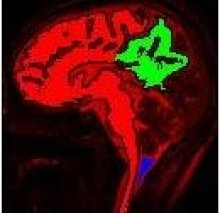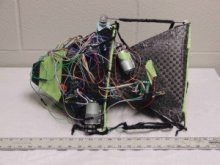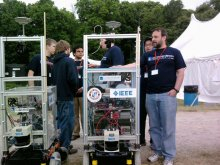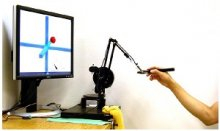Intelligence
A key research goal of the institute is to enable intelligent sensing and behavior in robotic systems. This goal encompasses creating robots that have accurate perception in a dynamic, complex environment; can reason efficiently with abstract states; and perform intricate actions in changing and uncertain environments. Intelligent robots and systems must also have the ability to adapt to novel tasks and scenarios and have the ability to learn from experience. In order to prepare students to do research on these topics, we offer an introductory undergraduate course on artificial intelligence as well as graduate level courses on probabilistic graphical models, machine learning, computer vision, and sequential decision making.
Manufacturing Robots
Though a great deal of manufacturing work was outsourced over the past few decades, it is beginning to return to Northern Ohio. Cutting-edge robotics technology can help bring even more of that work to the region, increase the efficiency of manufacturing systems, and improve the quality of finished products. In addition to focusing on the classic manufacturing robotic systems like automation, collaborative robots like ABBY that can bring parts and tools to workers to allow them to focus on the task at hand. Thanks to innovative work in this research theme, Cleveland is poised to become a manufacturing leader once again, this time for the 21st century.
Biorobotics
In one of the many areas for collaboration between departments, biorobotics—or biologically inspired robots—seek to develop robots that are derived from biological systems. Movement is a particular focus of biorobotics, as animals and insects have developed complex, adaptive, and flexible movement patterns that are surprisingly difficult to replicate mechanically. Some of the robots designed under this theme are the SeaDog is designed for marine and beach exploration through mimicing the movements of lobsters and cockroaches, and the TetraSpine which is modeled after the human spine and was built to be used for travel over various ground surfaces. The TetraSpine is being developed in conjunction with the NASA Ames Research Center and may one day be used for exploration of extraterrestrial surfaces as well. Mapping the movements of biological creatures has also lead to a focus on the neurological systems behind that movement. The combination of the two is being used to develop ground-breaking robots that can assist people with disabilities.
Mobile Robotics
Mobile robotics works to develop robots that are capable of moving dynamically and autonomously through any and all environments. The applications of these robots are endless, covering endeavors like exploration as well as serving as support systems for the disabled. There are also endless opportunities for collaboration with the other research themes (intelligence, assistive and manufacturing robotics), as well as with other departments across the university. This is particularly true for the School of Medicine and disciplines such as occupational and physical therapy as current work on mobile robotics at CWRU is focused on wheel-chair based systems. These robots have competed in several Intelligent Ground Vehicle Competitions (IGVC).
Medical Robotics
Not only is Cleveland one of the largest health-care communities in the world, the medical field is rapidly expanding and the demand for technological innovations is enormous. More importantly, this is a field where robotics has the potential to do enormous good. Under this research theme, we create robotic systems for image-guided interventions, such as MRI guided robotic catheters, as well as improve the general capability and intelligence of robotic surgical systems to produce robotic surgical assistants capable of autonomously performing tasks such as suturing. Another focus under this research theme is haptics in which we study human sensory-motor performance in manipulation tasks, for teleoperated and virtual reality settings.




